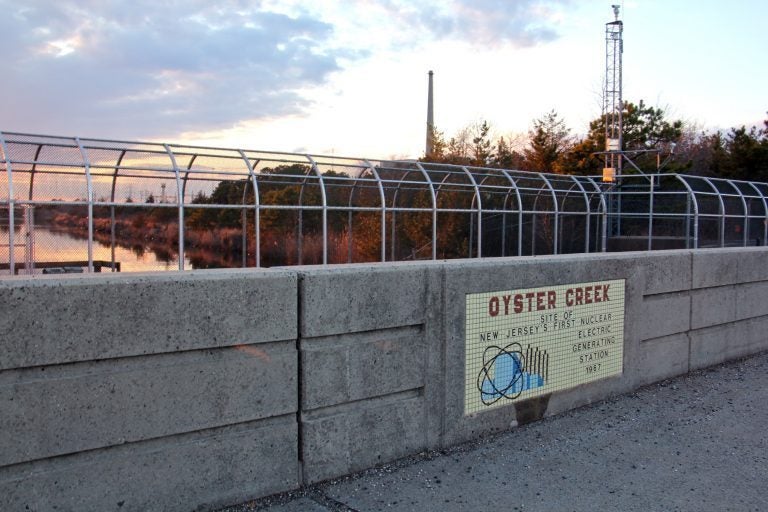Offshore wind company considers using Shore power plants for energy distribution
A Danish offshore wind company is considering adaptively reusing two New Jersey power plants set to be decommissioned.

Oyster Creek was New Jersey's first nuclear generation station, opened in 1967. It shut down in September 2018. (Emma Lee/WHYY)
A Danish offshore wind company is considering adaptively reusing two New Jersey power plants set to be decommissioned.
The Press of Atlantic City reported that Orsted is eying B.L. England and the Oyster Creek Generating Station as part of a plan to connect its turbines to the energy grid.
Orsted said the project could produce up to 1,100 megawatts of energy and bring 100 permanent jobs during the wind farm’s expected 25-year life cycle.
An Orsted vessel is currently conducting geophysical surveying off the coast of Atlantic and Cape May counties. It’s the first phase of the “Ocean Wind Project” situated 15 miles east of Atlantic City. They’ll see if interconnections to the plants are possible.
The Oyster Creek nuclear plant shut down in September, and the coal-fired B.L. England is set to close in May.
B.L. England is also part of a proposed natural gas pipeline. Environmental groups said they hope the wind project prevails over the pipeline.
Orsted launched the world’s first offshore wind farm in 1991 and owns and operates the U.S. firm’s offshore wind farms near Block Island, Rhode Island.
The firm submitted a proposal to the New Jersey Board of Public Utilities late last year in response to the nation’s largest single-state solicitation of offshore wind projects announced in September 2018.
Equinor and Atlantic Shores Offshore Wind have also submitted bids.
Gov. Phil Murphy’s administration has set a goal of 3,500 megawatts of offshore wind generation by 2030, or enough to power more than 1.5 million homes. The governor wants a 100-percent clean energy state by 2050.
The Associated Press contributed to this report.
WHYY is your source for fact-based, in-depth journalism and information. As a nonprofit organization, we rely on financial support from readers like you. Please give today.




